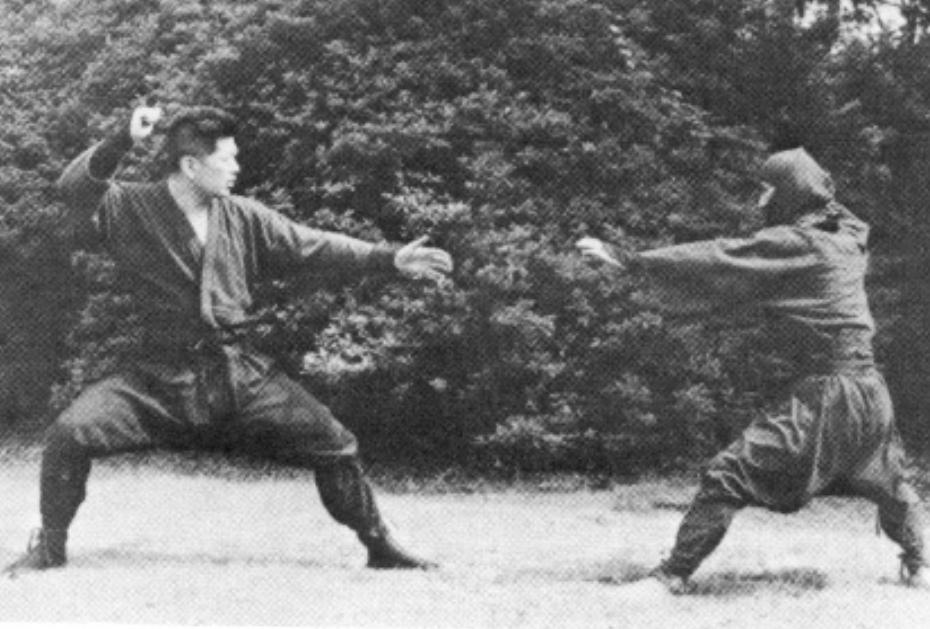It’s a well-known concept in martial art and ancient oriental philosophy that surpise is the best strategy of attack; however, of all the widespread martial arts styles in the world, only Ninjutsu truly embodies this principle through & through. It’s the air of mystery and the efficiency of clean no-contest fighting that makes the Ninja a figment of popular culture like no other form of martial artist.
Background
Ninjutsu was developed by the underground gangs of outlaws in Japan over many centuries as a means of evading and withstanding the onslaught of imperial Samurai. While the government was practising its own forms of Karate and Jujitsu, the outcast clans developed and refined their own unique system based on the best of their own skills – this became known as Ninpo or Ninjutsu.
Ninjutsu wasn’t merely the keepsake of petty thieves and runaway convicts, it was the art of anti-imperial assassins and spies. Ninjutsu included all the techniques of traditional Japanese combat systems and went a step further by utilising the advantages of preparation and surprise.

What does the word Ninja actually mean in Japanese?
Well, it’s a Chinese pronunciation based variant of the Japanese word Shinobi, which literally means remove – this could relate to the assassinated victim or the invisible appearance of the ninja. The word Shinobi is also closely related to the everyday word Shinobu – to hide.
Techniques
Ninjutsu’s techniques bear resemblance to other styles, for example, it’s largely like a cross between jujitsu and karate; however, Ninjutsu has a few unique techniques that truly are superior. For example – and this is only practised by the better schools – the semi-open hand structure. Ninjutsu fists – in a good club – are not normal fists but semi-closed and ready to cup the chin with a palm strike while simultaneously striking the neck with a side palm. Unbeknown to nearly all martial arts ‘masters’ – and there’s a chance even Hatsumi doesn’t understand this – the half-fist structure is ideal for a proper knuckle-based strike that chips into a jaw for impact without the slightest hint of rebounding energy to disturb the striker’s balance. Very few Ninjutsu teachers truly understand and appreciate the logic behind their half-a-fist, however, for the true master of empty-handed combat, it resembles the perfect hand structure for both knuckle and palm contact alike, and wouldn’t logically be held stiffly but would be used a lot during contact in a manner resembling the Shaolin snake head hand and the Tai Chi whipping hand in terms of finger arrangement.
As for rolls – and there’s a lot of them in Ninjutsu alongside cartwheels, flips and dives – Ninjutsu rolling doesn’t just go forward and back like in Aikido for example. Ninjutsu rolling goes sideways over the shoulders too, and on the end of a leaping dive over an object or through a hoop or window of some sort. Of course, in modern Ninjutsu clubs you can still expect the same level of safety as you’d get in a Judo, Jujitsu or Aikido club for example.

Masaaki Hatsumi heads up the heritage of Ninjutsu from his base in Noda, Chiba, Japan.
Masaaki Hatsumi is the global head of Ninjutsu – the undisputed teacher of all teachers of the art of classical Ninjutsu today. Most top teachers travel to Japan to train with him, and some of the UK’s top Ninjutsu teachers have even brought him to the UK to teach students and teachers alike over here for the duration of his stay.
Joining a Ninjutsu club
While Ninjutsu contains ample bullshido it also contains plenty of genius and as such deserves to be on the top of your agenda if Japanese striking arts are what you intend to practise. Definitely worth trying with a pinch of salt if you can find a good local teacher, and if you’re based in Manchester then you have a few decent options – check out our analysis of Manchester Ninjutsu Clubs.